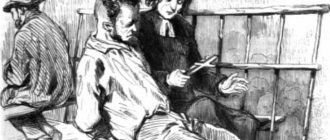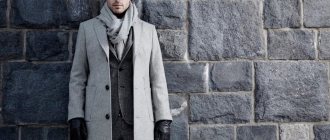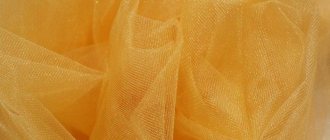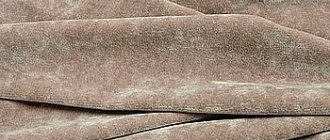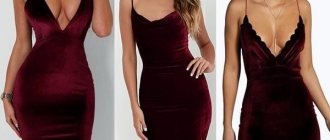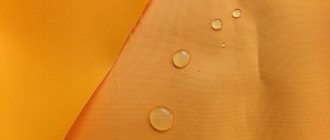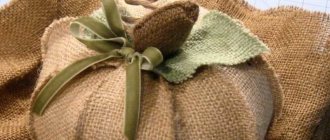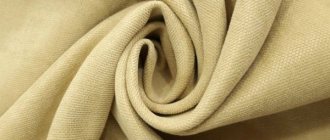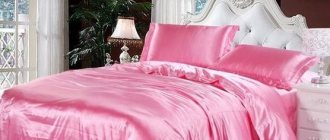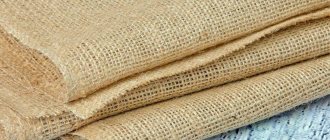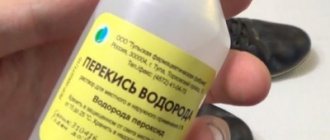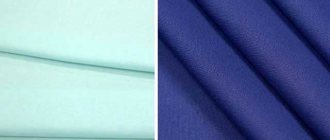Printed fabric is a textile fabric with a pattern printed on the front side.
Initially, patterns were applied manually, that is, by printing. They used wooden forms with a carved image, which were first dipped in paint and then pressed tightly to the fabric. For a better effect, the boards were tapped with a hammer. This is where the name “stuffed” comes from. Traditionally, cotton and linen materials were used for printing. Now they decorate natural, artificial, synthetic ones.
- Printing techniques
- Review and description of technologies
- Methods of applying an image
- Cotton fabrics
- Other popular types
- How to determine the front side
What type of fabric is this?
Printed fabric is a material on which a printed design is applied. Previously, it was added to the canvas by hand by pressing dyes in relief onto the canvas. This is where the name “stuffed” comes from.
Printed fabric colors
Nowadays the process of applying a pattern is automated and carried out by fabric printing machines. Only the name was inherited from the old technology.
But even in our time there are craftsmen who do stuffing by hand. They mainly produce small batches of material for exclusive design projects.
Printing techniques
Currently, the hand-stuffing technique is used exclusively in handicraft production. Modern technologies make it possible to create drawings of various shapes, complex gradient transitions, and also transfer photographic images.
Review and description of technologies
On an industrial scale, printing, that is, applying dyes to certain areas of fabric, is performed in different ways.
Mesh . To apply a printed pattern to fabric, use a template (a frame with a stretched nylon mesh). Certain areas of the mesh are covered with film, resulting in an image corresponding to the developed sketch. The template is placed on the canvas, then the paint is pressed through the mesh using a rubber plate.
For a multi-color pattern, several templates are used. Consistently moving the frame with the mesh, paint the entire surface. This method is considered quite labor-intensive, but allows you to reproduce complex pictures with maximum accuracy. Used for silk and crepe fabrics.
Airbrush . A template with a cut out pattern is placed on the fabric. The paint is applied using a spray gun, smoothly moving from one tone to another. The result is colored printed patterns on fabric that have varying degrees of brightness. Suitable for silk and pile fabrics.
Machine . In this method, textiles are passed between printing rollers and a rotating cylinder. A pattern is first carved on the surface of the shaft, then paint is applied. When printing, the roller presses the web against the cylinder, resulting in a clear pattern. There are machines with one shaft (for a single-color pattern) and with several (for multi-color printed prints). Used for synthetic and natural fabrics.
Transfer printing (sub-static). The image is transferred through an intermediate medium, that is, through paper or a special film. First, the desired image is applied to the paper, and then it is pressed onto the material with a heat press. Under the influence of high temperatures, the paper burns, and the pattern is firmly imprinted on the canvas. On synthetics, a pronounced textured pattern is obtained; on natural materials, the image will be duller.
Methods of applying an image
Based on the method of applying a printed pattern, the following types of printing are distinguished.
Direct . The paint is applied to a bleached or light-colored base. If the color pattern occupies 30-40% of the total area, the textile is called white-earth. Semi-ground fabrics - the area of the picture is from 40 to 60%, for ground fabrics - more than 60%.
Vytravnaya . Patterns of various shapes are obtained on the surface of a plain-dyed fabric by applying a special substance that destroys the dye. White etching looks especially impressive on a dark background, but there are also colored patterns. In this case, substances are used that contain dyes that are resistant to etching.
Reserve . Before painting, certain areas are treated with a special protective substance (reserve). As a result, printed patterns are formed that correspond to a given sketch. Repeating the procedure many times allows you to obtain multi-color images.
Origin story
which has long been famous for cotton fabrics and a variety of natural dyes, is considered the birthplace of printed fabric Then this art was mastered by the peoples of Asia and Egypt. In China there are samples of fabric that date back to 220 AD.
Printing technology came to Europe at the end of the 14th century. Heel prints with gold and silver patterns were especially popular. Italy and Germany were considered the main production centers of printed fabrics. On the territory of Rus', fabrics with printed patterns were known back in the 12th century.
Each nation had its own characteristics of applying patterns to canvas. In China they used stencils, while in Europe they used wooden stamps instead.
Gradually the technology improved; metal plates replaced primitive stamps made of wood and scrap materials. And in 1850, the process was mechanized, and the rapid development of the textile industry began.
History[edit | edit code]
The art of printed cloth, according to researchers, originated in India, where cotton cultivation has been developed since ancient times and there was no shortage of natural dyes. Strabo and other Roman authors mention Indian printed fabrics. The production of printed fabrics spread to other countries in Asia and Africa. Egyptian printed cloth became especially famous; Pliny the Elder in Natural History describes the way the Egyptians applied paint to fabric using a wax reserve compound[1].
Europe. Middle Ages[edit | edit code]
It is known that the first European printed fabrics appeared in Italy. The method of dyeing fabric with a “printed stencil” is described by Cennino Cennini in his “Treatise on Painting” (late 14th century), who recommends printed fabrics for sewing children’s clothing and church lecterns. Cennini reports printing patterns on colored backgrounds with hand-painted details with a brush. Italian fabric printers were members of the guilds of painters[1].
In the 14th and 15th centuries, heels began to be made in Germany. Since very few silk fabrics were produced in Germany, and imported Italian ones were expensive, local printed fabrics were popular due to their low cost. Judging by the German treatise (late 15th - early 16th centuries), special attention was paid to the production of printed prints with silver and gold patterns (a pattern filled with black adhesive paint was covered with silver or gold powder, sometimes crushed glass was applied to it), since they replaced expensive silk fabrics. Heels were also made in several colors using oil paint. At first, printed items were produced in monasteries (mainly in the Lower Rhine region), and only later did urban artisans begin to manufacture them. German printed heels were made both on linen and on imported plain fabrics (taffeta, satin). When making early German printed patterns, small wooden stamps were used, sometimes the pattern was stamped on several boards[1].
Researchers conditionally divide all surviving examples of medieval prints into those produced in Germany (Rhineland) and “international” (mostly Italian, as well as those originating from the Netherlands and other countries). Italian printed prints differ from German ones, made on expensive materials; at the same time, they are characterized by fine elaboration of the design and more complex compositions[1].
From the middle of the 14th century, printed fabrics with plot compositions (including images of biblical episodes) appeared.
New time[edit | edit code]
At the end of the 18th century, the Swiss Christoph-Philippe Oberkampf significantly improved the mechanical method of printing on fabrics. For printing, copper engraved boards with an in-depth pattern began to be used, and printing from a cylindrical shaft also became of higher quality.
The main danger for printed fabrics is fading of the pattern under the influence of sunlight[2] and shedding during washing if unstable dyes are used for the printed material.
Fabric composition and its properties
The basis for printing is a material of natural origin, but synthetic fibers are added to improve their physical properties.
Basics for printed fabric:
- Cotton. Fabric bases made of cotton fiber are durable and affordable, and are hygroscopic.
- Linen. Linen materials are highly durable, do not accumulate static electricity, are hypoallergenic, and have an antibacterial effect.
- Silk. Silk products are soft and pleasant to the body, have a noble shine in the sun and excellent hygienic properties.
- Wool. Wool-based fabric is elastic and pliable, does not wrinkle, holds its shape well, does not absorb odors, and has excellent hygroscopicity.
Excellent service from Tessutidea
Do you want to buy high-quality cotton, but are confused by the variety of choices? Call our managers. Competent specialists will help you not only choose the right fabric, but also calculate the required quantity and recommend the best accessories and fittings.
The sale of goods on the website is carried out wholesale and retail with delivery in Moscow and other cities. Regardless of the volume of the order, you will receive the goods in a short time. The website regularly holds promotions and offers attractive offers, and a system of discounts is provided for regular wholesale customers. Once you contact Tessutideya, you will never want to change your fabric supplier again!
Types of fabric
Main types:
Calico
Dense fabric with good wear resistance. Used for sewing bed linen. The drawings on this canvas are particularly bright.
Poplin
During production, fibers of different thicknesses are used, which gives the fabric an interesting texture. Soft and pleasant to the body material that does not shrink. Used for sewing bed linen, clothing and home textiles.
Satin
The material has a smooth surface and high strength. Used for the production of 3D printed bed linen.
Printed satin
Smooth and durable base with a glossy sheen. Ideal for 3D printing. Used in home textiles and clothing.
Chintz
It is particularly soft, since cotton fibers are not bleached during the production process, but can shrink and become very wrinkled. But it does not shed or fade in the sun.
Linen
In its pure form, it does not stain well, wrinkles a lot and shrinks. Therefore, it is most often mixed with cotton or synthetic fibers. Used for the production of home textiles and clothing.
Kulirka
Light, airy and elastic fabric used for sewing summer and children's clothing. Requires delicate care, as it is prone to deformation.
Jacquard foucrault
Mainly made from synthetic materials. It has an interesting texture and is used to make curtains, upholstery and clothing. It is not demanding in terms of care.
Choice of colors
Much depends not only on the shape, but also on the correct selection of shades. The wide palette of colors for stretch ceilings leaves virtually no restrictions. Or do they still exist?
We have selected several general recommendations that will help you get a beautiful and stylish canvas:
- First of all, you need to remember about harmony: the ceiling should be combined with the rest of the interior and not distract attention from it;
- Do not combine more than three main shades, otherwise the result will be very tiring for the eyes;
- If you choose bright decor, make the background neutral. Make sure the decorations are appropriate;
- Try to see each option live: any monitor distorts color rendition;
- Did you like modern types of canvas, like a chameleon that changes shade at different angles or “with a spark”? It’s better to contact designers to harmoniously fit them into the design: such a coating can be quite unpredictable and in the room it may turn out to be completely different from the one on the sample.
See what stretch ceilings of the most popular colors look like in the interior in a separate section of our website - we are sure this will help you make your choice.
What standards are used in production? What do they take into account?
Fabrics produced at enterprises must comply with standard samples of artistic and aesthetic indicators approved in accordance with GOST 15.007 and GOST 15.004.
The fabric on which printing will be applied in the future must comply with the technical characteristics established for each type of fabric.
After processing, the fabric with a printed pattern is checked for appearance defects in accordance with GOST 161-86. Particular attention is paid to the uniformity of pattern application and the quality of painting.
Overview of models and possibilities of their installation
The market is represented by three types of fabric blinds:
- vertical from lamellas 50-150 mm wide;
- rolls are wound on a special roller;
- Roman - with the help of a system of cords and rigid inserts, they are raised like sails.
Roller and Roman blinds have a horizontal opening type. They are hung mainly on a movable sash or on a fixed part of the frame, sometimes on the upper slope and very rarely on the upper partition above the window or ceiling. The window sill is almost always open, which contributes to saving and efficient use of usable space in small rooms.
Vertical lamella blinds can be hung on the upper slope, on the ceiling or in the partition above the window; in this case, the window sill is almost always closed. But with such curtains you can decorate an entire wall, which is very important if you need to visually adjust the proportions of the room.
What does it mean - stuffed?
So what kind of fabric is this, what is its feature? The only thing is that some kind of pattern is applied to its surface. But why stuffed? What is it stuffed with? In the modern textile industry - nothing. The term has remained in use since the time when people learned to make fabrics with patterns. Then, special wooden stencils were used for this, which were covered with paint, applied to the fabric with paint on the front side, and then the paint was transferred to the textile by tapping - stuffing. Such fabric required careful care, since the paint gradually washed off, faded, and the bright item lost color and became faded.
This method of coloring ceased to be used over time, but the term stuck.
Printed fabrics today are produced using modern printing machines that provide deep dyeing. And modern dyes on high-quality fabrics create a bright pattern without affecting the original properties of the material, and practically do not wash out. The design can be very diverse: geometric, floral, fantasy, applied to either a white or plain-painted base. “Volume” printing – with a 3D effect – has become widespread today.
The fibrous composition, thickness, and type of weave of printed fabrics can be different. These are both natural and artificial and mixed fabrics.
Therefore, the care of modern printed fabrics depends precisely on the composition, thickness, and density of the material, and not on the type of dye.
